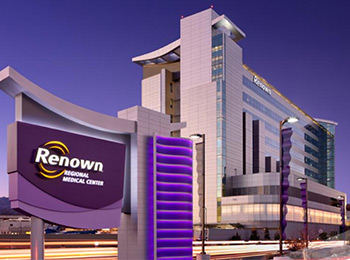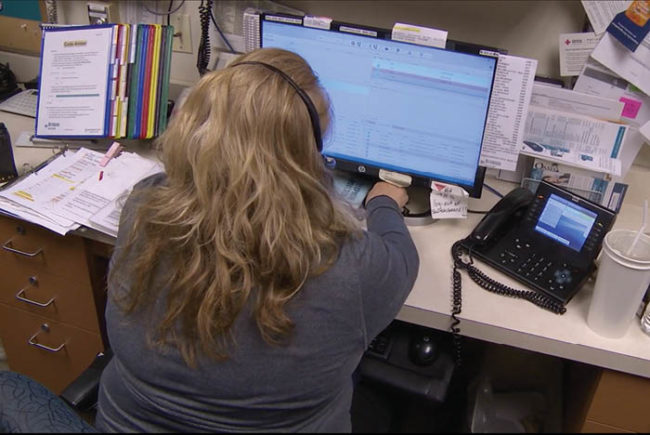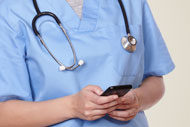 |
|
Photo courtesy of Renown Health The Nevada-based health system invested in a mass notification system that would allow it to communicate with all 5,600 of its employees across 17 counties. |
The health care industry is in the midst of major, systematic changes, with more hospitals looking to health care information technology software, tools and applications, as well as other enterprise-level, secure technologies to help them run like efficient, modern businesses.
For that reason, hospitals are embracing critical communication solutions for a variety of uses and to stay in touch with key stakeholders during disruptive events (think outages, IT breaches, severe weather, etc.).
When acquiring a mass communication technology, however, hospitals need to think in advance about whom they will need to reach, what they will say and the type of responses they desire. The messages can be based on the nature of what’s going on, who will be impacted, and what buildings/towns are affected. Having templates drafted in advance helps to avoid confusion during an emergency. Don’t forget — during an emergency, a recipient’s reading comprehension drops to a sixth-grade level.
Case 1. Renown Health
Renown Health is Reno, Nevada’s only locally owned nonprofit and locally governed health care network. The network serves a 17-county region and employs more than 5,600 individuals, which includes full-time, part-time and per diem staff. In total, it supports more than 257,840 outpatient visits, more than 100,000 trauma and emergency visits, and approximately 75,000 urgent care visits annually. The health care network consists of numerous hospitals, including Renown Regional Medical Center — home to its children’s hospital, Renown South Meadows Medical Center, Carson Valley Medical Center and Renown Rehabilitation Hospital.
Renown first implemented Everbridge’s technology to improve its mass notification and incident communication process. It now uses the technology for a handful of different use cases, including STEMI, sepsis and stroke alerts; on-call staffing communications; hospitalist communication; code triage; and IT incident response (picture archiving and communication systems, or PACS).
Before the implementation, the process for a STEMI heart attack alert relied on a series of individually made calls. The process was tedious and time-consuming. Today, Renown is able to reach all the necessary personnel for a STEMI patient with a few clicks of the keyboard. Predefined notification templates help to speed up the process of notifying the correct people, which allows Renown to respond quicker and provide a higher level of care to STEMI patients.
The process for a sepsis and stroke alert on the critical communication solution is similar. After receiving a call from an ambulance that a patient is on the way, the emergency department charge nurse at Renown sends a “code stroke” or “code sepsis” via the solution, which notifies the necessary hospital personnel who are required at the ambulance doors immediately when the patient arrives.
The tool also helped to help streamline the staffing process. On-call physicians and providers now are reached via text message, and there’s an escalation process with three cycles and 15 minutes between each cycle. The technology is also used for code triage. In the case of an emergency, using preset notification templates, code triage alerts can be sent out in a matter of seconds to all 40 designated leaders.
Renown also has improved its PACS system used to store radiological images. If the system goes down, radiologists who want to look at studies are unable to do so. Through the new technology, Renown Health initiates a notification that is sent to around 30 leaders via cellphones when this system goes down, and provides an estimated time of when they can check back.
Renown Health hopes to expand on the above use-cases, including developing a plan to implement a 24/7 IT help desk to send notifications to key IT leaders who are impacted during a system outage. It also would like to explore messaging compliant with the Health Insurance Portability and Accountability Act (HIPAA).
Case 2. Molina Healthcare
Molina Healthcare is based in Long Beach, Calif., with offices and companies in 17 states. Founded in 1980, the company provides Medicaid and Medicare services to more than 1.8 million members.
With a large number of employees working in tall office buildings distributed across different levels, Molina Healthcare needed a communication tool that would allow it to provide employees with information and updates during incidents that could impact them in any way. The range of incidents it typically experiences is broad, but a lot of them are environmental or weather-related, such as hurricane threats, snowstorms, blizzards and even ice storms. Because this is information one can typically anticipate, Molina decided to use Everbridge for its critical communication needs.
“Its critical communication solution enables us to prepare for these critical events and ensure we communicate consistently and efficiently with all of our staff members,” says Joe Layman, director of business continuity management at Molina Healthcare. “The first quarter of this year, across our whole organization, we had 63 different incidents where we either closed early, closed for a day or more, or opened after a delay. We used [this tool] in all of those instances to communicate the right message to our staff, informing them of the information they needed to either do their jobs effectively, or more importantly, ensure their safety.”
It’s important to ensure that any incident that impacts critical business functions, including IT, is addressed in a timely manner so that staff can get back up and running. That’s why Molina Healthcare is in the process of looking into an IT alerting tool to see how it can incorporate the IT team into its critical communication process. “When we look at the cost of downtime, that number goes up even more quickly. Our goal is to use that module to save costs and improve response times,” explains Layman.
Molina Healthcare chose the Everbridge Unified Critical Communications platform for staff communication. With Everbridge, Molina Healthcare is able to communicate with employees via multiple paths so the right message gets to the right person at the right time.
Case 3. PIH Health
PIH Health is a regional nonprofit health care delivery network that serves more than 2.1 million patients in Los Angeles and Orange Counties, as well as the San Gabriel Valley Region. The fully integrated network features multiple outpatient medical offices, a multispecialty medical group, home health and hospice care as well as heart, cancer, stroke, women’s health and emergency services.
As a multidisciplinary health system that employs more than 5,200 and serves as a disaster resource center for Los Angeles County at its Whittier hospital campus location, PIH Health has a significant number of individuals to notify during an emergency — let alone during regular operations. The organization also needs to be able to reach nurses and on-call staff members efficiently.
PIH Health chose a suite of critical communication tools to more rapidly deliver emergency and operational messages to all employees, across all devices and contact paths. PIH Health administrators now can use the system from a mobile application to communicate code triage alerts, activate crisis response teams and fill open shifts.
“Since using Everbridge, we have found that we can call out to 5,200-plus employees in a shorter amount of time,” says Carole Snyder, program manager, emergency preparedness, PIH Health. “The program is designed to hit all pathways — email, text messaging, voice messaging and more. Our members can’t respond ‘yes’ fast enough to confirm and stop the Everbridge messages from escalating to another pathway.”
The tool allows PIH Heath to send one message, using one voice, to all PIH Health employees or to a designated group of employees within the organization (e.g., to the crisis response team). In addition, it has developed a crisis response team for both PIH Health hospitals and the medical group. That crisis response team involves management, administration, facilities, key individuals and nursing leaders.
“We use Everbridge when we need to activate a code triage — which is our disaster code. When people see code triage messages they know that it is serious. This gets everybody moving and following the pre-established emergency response plan,” Snyder says.
PIH Health also uses the tool to help with its nurse staffing and scheduling. Now, its charge nurses use the communication suite every day in the emergency department and in the observation units, and no longer have to rely on inefficient call trees.
Hospitals need to be able to communicate quickly and efficiently when incidents happen. An integrated emergency notification system solves critical communication challenges by quickly delivering messages to one or thousands of target recipients. A unified critical communication platform equips health care organizations with the solutions needed to deliver high-quality patient care while efficiently keeping staff connected, and without violating HIPAA privacy rules.
Travis Wilkins manages health care product marketing efforts for Everbridge.





